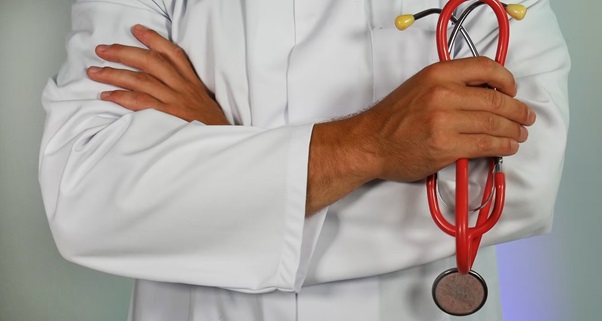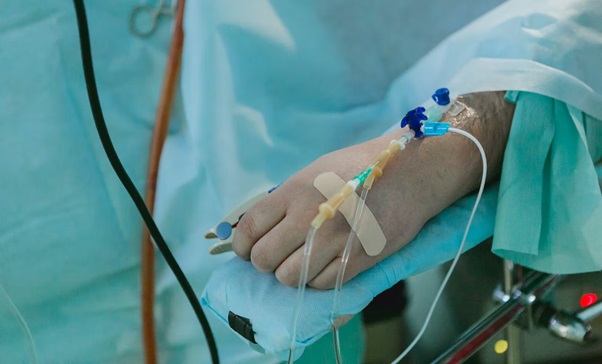Grierson-Gopalan Syndrome is a rare, genetic disorder that causes progressive muscle weakness and wasting. It is named after the two doctors who first described it in the medical literature. There is currently no cure for Grierson-Gopalan Syndrome, but there are treatments available that can help improve the quality of life for those affected by it. Read on as we discuss the symptoms, causes, and treatments of Grierson-Gopalan Syndrome, and provide information on how to cope with this condition and live a full life.

What Is Grierson-Gopalan Syndrome?
Grierson-Gopalan Syndrome (GGS) is a rare, inherited disorder that leads to muscle weakness and wasting. It is caused by mutations in the genes encoding the proteins dystrophin and utrophin. These proteins are essential for muscle function. The loss of dystrophin and utrophin results in progressive damage to the muscles, which leads to muscle weakness and wasting. A person suffering from Grierson-Gopalan syndrome has an increased risk of developing heart and respiratory problems, as well as other complications. There are two types of Grierson-Gopalan Syndrome: type 1 (also known as severe GGS) and type 2 (mild GGS). Type 1 is the more severe form of the disorder and typically manifests in infancy or early childhood. Type 2 is less severe and usually appears later in childhood or adolescence.
- GGS is a progressive disorder, which means that it worsens over time. The rate at which it progresses varies from person to person. Some people with GGS may only experience mild muscle weakness, while others may become wheelchair-bound.
What Are the Symptoms of Grierson-Gopalan Syndrome?
The symptoms of Grierson-Gopalan Syndrome vary depending on the type and severity of the condition. In general, symptoms include muscle weakness and wasting, joint contractures (stiffness), skeletal deformities, and respiratory problems.
- Type 1 GGS is typically more severe than type 2. Infants and young children with type 1 GGS may have difficulty feeding and may fail to thrive. They may also experience muscle weakness, joint contractures, and respiratory problems.
- Type 2 GGS is typically less severe than type 1. Children and adolescents with type 2 GGS may experience muscle weakness and wasting, joint contractures, skeletal deformities, and respiratory problems. However, they are usually able to walk and participate in activities of daily living.
What Causes Grierson-Gopalan Syndrome?
GGS is caused by mutations in the genes encoding the proteins dystrophin and utrophin. These proteins are essential for muscle function. The loss of dystrophin and utrophin results in progressive damage to the muscles, which leads to muscle weakness and wasting. There are two types of Grierson-Gopalan Syndrome: type 1 (also known as severe GGS) and type 2 (mild GGS). Type 1 is the more severe form of the disorder and is caused by mutations in the DMD gene. This gene encodes dystrophin, a protein that is essential for muscle function. Type 2 GGS is less severe and is caused by mutations in the UTRN gene. This gene encodes utrophin, a protein that helps to stabilize muscles.
What Are the Treatments for Grierson-Gopalan Syndrome?
There is no cure for GGS, but there are treatments available that can help improve the quality of life for those affected by it. Treatment focuses on managing the symptoms of the condition. Physical therapy can help to improve muscle strength and flexibility. Occupational therapy can help with activities of daily living. Speech therapy may be recommended for those with difficulty speaking. Orthopedic surgery may be necessary to correct skeletal deformities.
- Orthopedic Surgery: This is done in cases when there is a dislocation, bone deformity, or when contractures are present. Orthopedic surgery might include tendon release, joint fusion, or muscle lengthening.
- Physical Therapy: A physical therapist can also design an exercise program that is specifically tailored to the needs of the individual.
- Occupational Therapy: Occupational therapy can help with activities of daily living. An occupational therapist can teach energy-saving techniques and adaptive equipment that can make everyday tasks easier.
- Speech Therapy: Speech therapy may be recommended for those with difficulty speaking. A speech therapist can help to improve communication skills.
- Nutritional Therapy: Nutritional therapy is important for those with GGS. A nutritionist can provide information on how to get the proper amount of nutrients and calories.
In some cases, medications may be prescribed to help improve muscle function or relieve pain. These include steroids, botulinum toxin injections, and anticonvulsants.
- Steroids: These drugs can help to improve muscle function and relieve inflammation. Steroids, in this case, are typically used as a short-term treatment.
- Botulinum toxin injections: These injections can help to relax muscles and relieve pain. They are typically used as a short-term treatment.
- Anticonvulsants: These drugs can help to relieve muscle spasms and pain. They are typically used as a long-term treatment.
What Is the Prognosis for Grierson-Gopalan Syndrome?
The prognosis for GGS varies depending on the type and severity of the condition. In general, GGS is a progressive disorder that worsens over time. The rate at which it progresses varies from person to person. Some people with GGS may only experience mild muscle weakness, while others may become wheelchair-bound. Speaking with your doctor early on when you detect any symptoms can determine the progressiveness of the disease. So, with early diagnosis and aggressive treatment, many people with GGS are able to lead relatively normal lives. However, the condition can be disabling and sometimes life-threatening.
What Research is Being Done for GGS?
The National Institutes of Health (NIH) is funding research to improve our understanding of GGS and to develop new treatments. In addition, the NIH funded the establishment of the Grierson-Gopalan Syndrome Registry, which is a database of information on people with GGS. This registry is helping researchers to study the natural history of the condition and to identify new treatments. If you or someone you know has GGS, please consider participating in this important research effort.

Grierson-Gopalan Syndrome is a progressive disorder that worsens over time. There is no cure for GGS, but there are treatments available that can help improve the quality of life for those affected by it. With early diagnosis and aggressive treatment, many people with GGS are able to lead relatively normal lives. However, the condition can be disabling and sometimes life-threatening. The NIH is funding research to improve our understanding of GGS and to develop new treatments.




